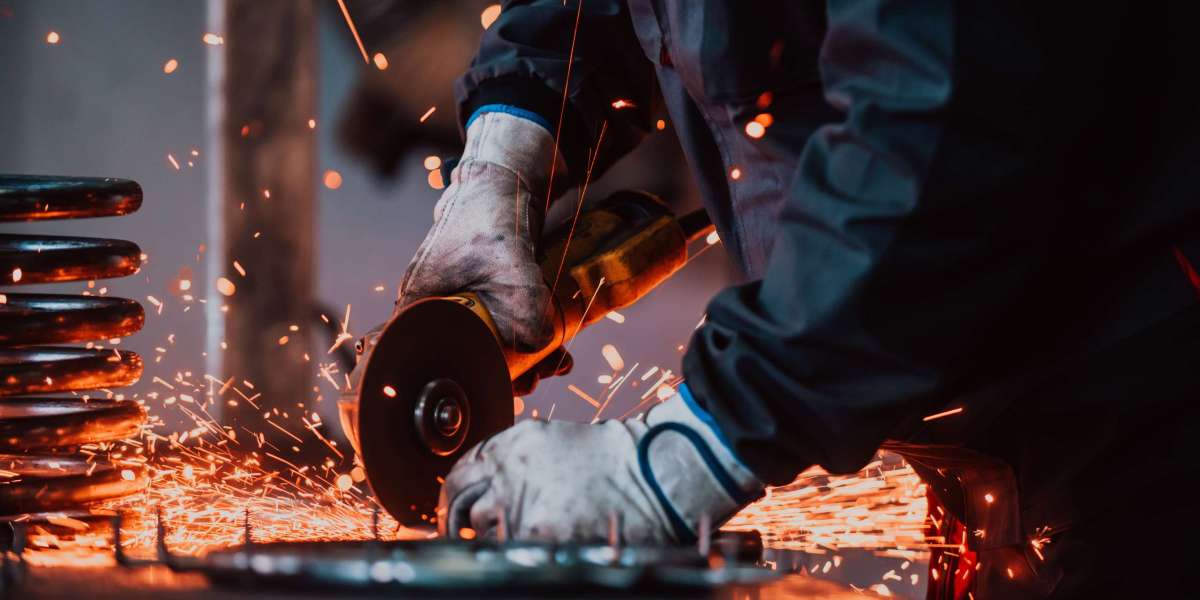Welding fabrication is at the heart of modern manufacturing and construction. From building steel structures and machinery frames to creating precision-engineered components, welding fabrication binds the industrial world together — quite literally.
In a time when accuracy, durability, and efficiency are essential, welding fabrication combines advanced technology with skilled craftsmanship to produce metal structures that can withstand the toughest conditions.
This article explores what welding fabrication is, the methods involved, its importance in modern industry, and how technology is revolutionising the process.
1. What Is Welding Fabrication?
Welding fabrication is the process of joining, shaping, and assembling metal parts through various welding techniques to create finished products or structural components.
Unlike simple welding — which focuses solely on joining two pieces of metal — welding fabrication involves multiple stages, including:
Design and blueprint creation
Cutting and bending of raw materials
Assembling and welding
Finishing, inspection, and testing
Fabricators work with metals such as mild steel, stainless steel, and aluminium, producing everything from industrial platforms and storage tanks to machine frames and transport equipment.
In short, welding fabrication is where engineering design meets physical production — transforming metal stock into functional structures.
2. The Role of Welding in Metal Fabrication
Welding is the backbone of fabrication because it provides strong, permanent joints capable of withstanding load, vibration, and heat.
Every industry — construction, automotive, aerospace, shipbuilding, and energy — relies on welders and fabricators to create components that are both reliable and precise.
Here’s how welding supports the fabrication process:
Structural Integrity: Welding ensures the final product maintains strength and stability.
Design Flexibility: Welded joints can take various shapes, allowing creative engineering designs.
Efficiency: Welding can replace heavy fasteners or cast parts, reducing weight and cost.
Scalability: Automated welding systems enable mass production without sacrificing consistency.
3. Common Welding Methods Used in Fabrication
Fabrication workshops use several welding techniques, each with its unique advantages. The choice depends on the material, thickness, design, and application.
a) MIG Welding (Metal Inert Gas)
MIG welding uses a continuous wire electrode and shielding gas to protect the weld from contamination. It’s ideal for mild steel and aluminium and is widely used for quick, clean, and efficient fabrication.
Advantages:
High productivity
Minimal post-weld cleanup
Great for long, continuous welds
b) TIG Welding (Tungsten Inert Gas)
TIG welding offers the highest precision and control, using a non-consumable tungsten electrode and inert gas. It’s commonly used for stainless steel and thin materials that require aesthetic or high-quality welds.
Advantages:
Clean, strong, and visually appealing welds
Suitable for intricate fabrication work
No spatter or slag
c) Stick Welding (Shielded Metal Arc Welding)
A traditional and versatile method, stick welding uses a consumable electrode coated in flux. It’s effective in outdoor or high-wind environments, such as construction sites or heavy structural work.
Advantages:
Works well on rusty or dirty materials
Portable and simple equipment
Good for thicker metals
d) Spot Welding
Used primarily for sheet metal fabrication, spot welding joins overlapping metal surfaces using pressure and electric current. It’s commonly found in automotive and appliance manufacturing.
Advantages:
Fast and efficient for thin materials
Consistent weld strength
Cost-effective for mass production
4. The Fabrication Process: From Blueprint to Product
A successful welding fabrication project follows a series of planned steps that ensure accuracy and quality.
Step 1: Design and Planning
Every project begins with a technical drawing or CAD model. Engineers define dimensions, tolerances, and material types. This stage ensures the design can be manufactured efficiently and meets structural requirements.
Step 2: Cutting and Preparation
The chosen metal is cut, shaped, or drilled to match the design. Modern fabrication shops use laser cutters, plasma machines, or saws for high precision. Clean edges and proper alignment are essential for strong welds.
Step 3: Assembly and Welding
Components are positioned, clamped, and tack-welded before full welding begins. Skilled welders or automated robots perform the main joints, ensuring the correct angle, penetration, and weld size.
Step 4: Finishing and Inspection
After welding, the product may be ground, polished, or coated to improve appearance and corrosion resistance. Final inspections — including visual checks, ultrasonic testing, or X-rays — ensure every joint meets quality standards.
5. Quality Control in Welding Fabrication
In industries where safety and precision are critical, quality control (QC) plays a major role in fabrication.
QC includes:
Checking weld dimensions and alignment
Performing non-destructive testing (NDT) for internal flaws
Ensuring welds meet industry standards such as ISO 3834 or AWS D1.1
Advanced workshops now use digital inspection systems and laser measurement tools to verify weld quality with high accuracy. These technologies help reduce human error and ensure repeatability across batches.
6. The Role of Automation and Robotics
Automation is transforming welding fabrication into a faster, safer, and more precise process.
a) Robotic Welding Systems
Robots handle repetitive, high-volume welding tasks with unmatched consistency. Using sensors and AI-driven controls, they adapt to variations in material thickness and joint placement.
b) CNC Integration
Computer-controlled machines cut, drill, and position components automatically before welding — ensuring perfect alignment and reducing setup times.
c) Digital Monitoring
IoT (Internet of Things) sensors track temperature, voltage, and weld quality in real time. This data helps fabricators identify issues early, maintain performance, and improve efficiency.
Automation doesn’t replace human welders it complements them by handling heavy or hazardous tasks, allowing skilled professionals to focus on precision and quality.
7. Safety in Welding Fabrication
Welding involves heat, fumes, and electricity so safety is a top priority. Fabricators follow strict protocols to protect workers and maintain compliance with safety regulations.
Key safety measures include:
Protective gear: Helmets, gloves, and flame-resistant clothing.
Ventilation systems: To remove harmful gases and fumes.
Equipment maintenance: Regular checks on cables, torches, and shielding systems.
Training: Workers are trained in safe handling, fire prevention, and emergency procedures.
By prioritising safety, companies not only protect their workers but also ensure consistent productivity.
8. The Future of Welding Fabrication
The future of welding fabrication lies in smart manufacturing — combining automation, AI, and advanced materials to achieve greater efficiency and sustainability.
Emerging trends include:
Hybrid Welding: Merging laser and arc welding for higher speed and strength.
3D Metal Printing Integration: Combining additive and traditional fabrication methods.
AI-Powered Quality Control: Using machine learning to detect defects automatically.
Green Fabrication: Using energy-efficient systems and recyclable materials to reduce waste.
These innovations are making fabrication more intelligent, environmentally friendly, and adaptable to the changing needs of modern industry.
Conclusion
Welding fabrication remains one of the most vital processes in the manufacturing world. It’s where design becomes reality — where metal, fire, and precision come together to create the backbone of modern infrastructure and machinery.
As automation, robotics, and digital tools continue to evolve, welding fabrication will become even more efficient and sustainable. Yet, the heart of the process will always lie in craftsmanship, skill, and an unwavering commitment to quality.
Through a perfect blend of art and science, welding fabrication continues to shape the strong and innovative industries of tomorrow.



